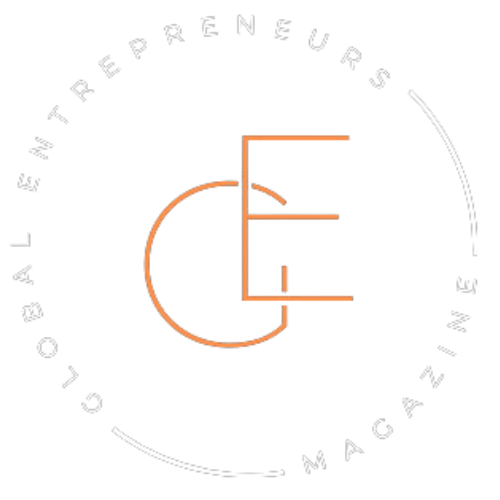You know the names. Musk. Gates. Zuck. They dominate headlines and stage lights. They tweet their next moves and the world listens. But what if the real breakthroughs aren’t coming from the usual suspects?
What if they’re bubbling up in silence?
There’s a different kind of visionary out there. No PR team. No flashy keynote. No billion-dollar valuation — at least, not yet. These are the thinkers and builders who aren’t chasing fame. They’re too busy chasing ideas. Most of them won’t show up in your feed. But they should.
They’re solving messy problems. Reimagining old systems. Building futures that don’t rely on permission from the establishment.
You probably haven’t heard of them. And that’s exactly why they matter.
The coder who taught AI to paint feelings
A few years ago, Amir sat in a cramped apartment in Istanbul, sketching what sadness might look like if it could breathe. Not the textbook kind. Not blue filters or sad violins. He was after something rawer — the kind of emotion that doesn’t explain itself.
He wasn’t a painter. He was a machine learning developer.
Instead of brushes, Amir used neural networks. Instead of models of reality, he trained algorithms on poems, music, and facial expressions. What he wanted wasn’t accuracy. He wanted resonance. Could an AI capture the ache in a memory? Could it understand joy as something quiet?
The first results were… off. A strange blur of color and pattern, almost ghostly. But somewhere in the mess, something clicked. Viewers couldn’t explain it, but they felt it. One said it reminded them of their grandmother’s last voicemail. Another saw their childhood dog. Amir didn’t know how to answer them. He wasn’t trying to provoke those things. He was just listening — to the data, to the art, and to his own need to feel something deeper in code.
Tech blogs barely covered it. Investors passed. The art world didn’t know where to put him.
But quietly, his work started showing up in small exhibits, niche conferences, and online communities that still cared about wonder.
Amir didn’t build a unicorn. He built a conversation.
And somehow, that might be more powerful.
The farmer building climate tech with scraps
In a village just outside Kisumu, Kenya, there’s a man named Daniel who collects broken parts like other people collect books. Rusted fans, cracked solar panels, busted radios — anything with a circuit or a screw goes into his workshop, which is really just a lean-to with a corrugated tin roof.
He never studied engineering. What he knows, he picked up fixing motorbikes and listening to old radio shows about science. The rest came from trial, error, and a lot of burns on his fingers.
Daniel’s latest project? A handmade irrigation system that runs on solar power and responds to soil moisture — built from scrap metal, leftover batteries, and coding help from a teenager down the road who taught himself Python on a secondhand phone.
The system saves water. A lot of it. Which means crops survive longer in droughts, and families eat more than just one meal a day. Word has spread to nearby villages. Now farmers walk for miles just to see how it works.
There’s no startup pitch. No TED Talk. Just a man with tools, solving a problem he lives with every single day.
And that’s the thing: Daniel isn’t designing for venture capital. He’s designing to stay alive. And in doing that, he’s quietly reimagining sustainability from the ground up.
The dropout who’s fixing supply chains from a garage
Sasha left college after a year. Not because she couldn’t keep up — she just couldn’t sit through another lecture about systems theory while her uncle’s trucking business was falling apart.
Empty warehouses. Wrong shipments. Delayed deliveries that bled money. Everyone blamed “the system.” No one thought to rewrite it.
So she did.
With a secondhand laptop and a whiteboard jammed between paint cans, she started building. First, a basic tracker. Then a routing tool. Then a dashboard simple enough for her uncle, who still used a flip phone, to understand.
No flashy tech. No blockchain. Just clear answers to real problems.
Word spread. First to a friend in textiles. Then to a cousin in cold storage. The code wasn’t elegant, but it worked. It showed people what was happening now — not in next week’s report. It saved time. It cut losses. It kept people in business.
She still works out of that garage. A fridge hums beside her desk, next to an old bike and a stack of expired shipping labels she refuses to throw away — reminders of how broken things got before she started fixing them.
Sasha doesn’t want to be famous. She just wants things to run on time.
And quietly, they are.
The woman rewriting biotech without a PhD

Eva was never supposed to be in the lab.
She started as a receptionist at a research clinic. The kind of place where credentials mattered more than curiosity. But Eva asked too many questions. She read the discarded printouts nobody looked at twice. She listened through the walls during coffee breaks.
One day, the assistant on the CRISPR team quit. Nobody else was available. Eva raised her hand. She wasn’t even on the shortlist.
But she got the job.
Turns out, she didn’t think like a biologist. She thought like someone who didn’t know the rules — and that helped her spot the blind spots.
While her colleagues debated peer-reviewed theory, she kept pointing out patterns that didn’t add up. Things everyone missed because they were too close to the science.
One of her observations led to a shift in how they tested gene therapy delivery. The tweak cut their error rate in half. The team lead took credit, of course. But the researchers started asking her to double-check their work “just in case.”
She’s still not in the published papers. Still not invited to speak. But her fingerprints are all over the breakthroughs.
Eva doesn’t need a title. She just wants to keep asking better questions.
And the science, quietly, is better for it.
The indigenous innovator protecting digital sovereignty
Marisol grew up speaking two languages — Spanish and Kaqchikel. One spoken everywhere. One spoken quietly, at home, like a song you didn’t want the world to ruin.
As she got older, she noticed something strange. Google couldn’t translate her grandmother’s words. Her school’s new software labeled her name as a typo. Her community’s stories weren’t archived, digitized, or even acknowledged online.
So she started coding.
With the help of elders and an aging laptop, she built an app that taught Kaqchikel to kids through audio clips, stories, and games. But it wasn’t just about language. It was about keeping memory alive — on their own terms.
Then came phase two: data rights. She partnered with a small nonprofit to educate her community on digital consent. Who owns your voice when you record it? What happens when your land is mapped and sold as a “resource zone” in someone else’s database?
She started holding tech literacy workshops in schoolyards and community halls. Nothing fancy. Just conversations and printouts and snacks. But slowly, people started asking tougher questions about how their identity was being shaped — and mined — online.
Marisol doesn’t call herself a founder. She says she’s just building a “digital fence around sacred things.”
Some innovations protect your future. Hers protects your past, too.
The tinkerer creating hardware for people who get ignored
In a cluttered basement in Milwaukee, Ray spends his weekends making devices that don’t exist yet — not because they’re futuristic, but because no one bothered to make them.
Like a pressure-sensitive spoon for people with Parkinson’s. Or a one-handed keyboard designed for kids with cerebral palsy. Or a wheelchair add-on that clicks together with magnets, because not everyone can grip a latch when it’s freezing outside.
Ray isn’t an engineer on paper. He’s a former mechanic who got tired of watching his neighbor struggle with basic tasks. Most of his designs start with a question: “Why does it have to be this hard?”
He scavenges old parts from junkyards. Gets help from an online maker forum where people trade tips like recipes. Tests prototypes on himself before ever handing them over.
Once, a product designer told him his ideas were too niche to scale. Ray laughed. “I’m not trying to scale,” he said. “I’m trying to help.”
There’s no brand, no funding, no sleek packaging. Just function. Just care.
And for the people who use his tools, that makes all the difference.
Real vision rarely needs applause
There’s a strange kind of freedom in being unknown.
No one expects you to follow trends. No one’s tracking your quarterly goals or asking you to optimize for virality. You build because you believe in something. You fix what’s broken because no one else will. You chase ideas that don’t fit neatly into pitch decks or press releases.
That’s what ties these people together. Not their industries. Not their backgrounds. But the way they work — quietly, persistently, and without waiting for permission.
They may never get the credit. Their names might not light up conference stages. But they’re already shaping how we live, connect, and imagine what’s possible.
So next time the spotlight swings toward the loudest voice in the room, maybe pause for a second.
And ask yourself who’s building in the dark — and what we might be missing when we’re only watching the stage.




